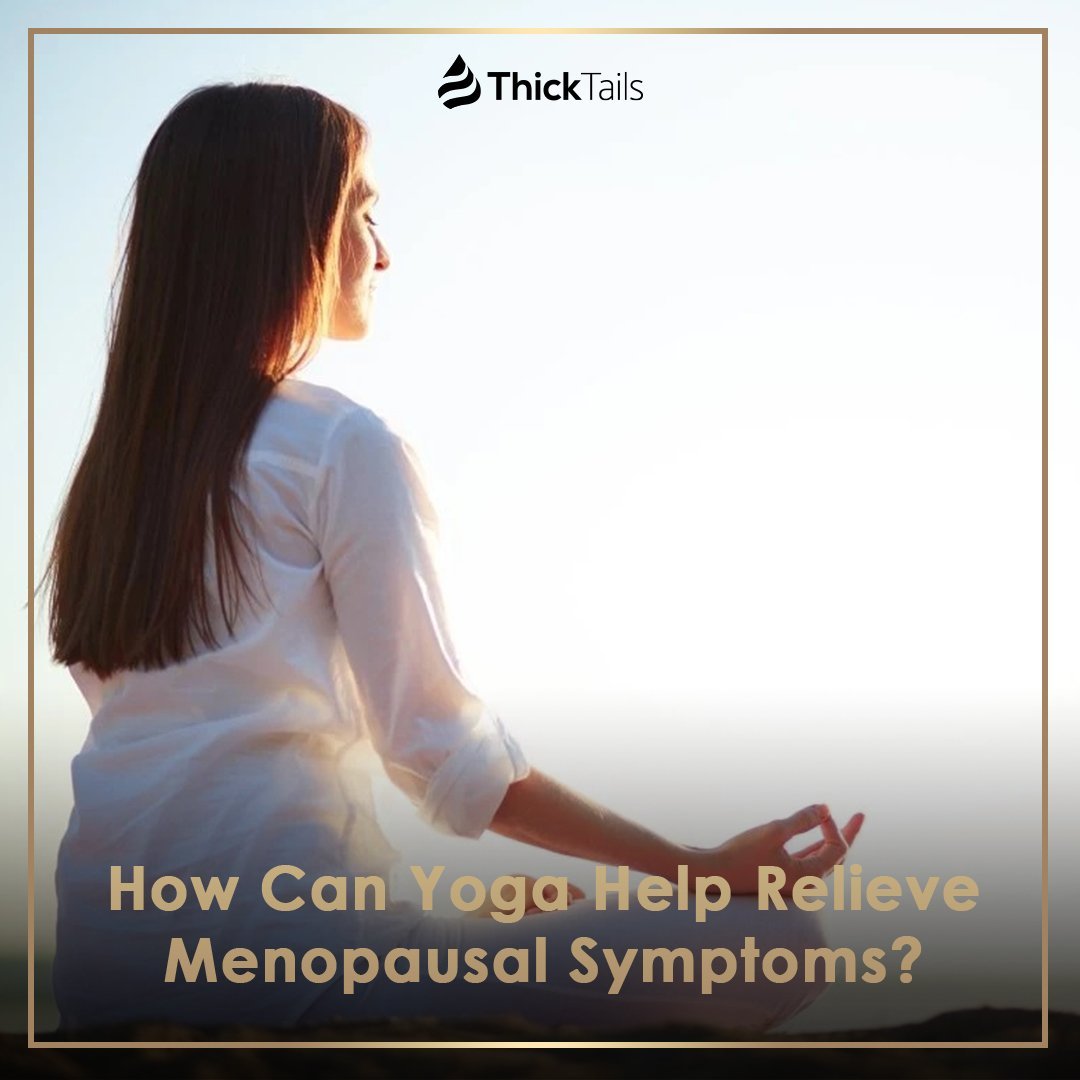Menopause is a crucial stage in womanhood. Ovaries stop producing egg cells, signifying the end of a woman's menstrual cycle and her capability to become pregnant. However, this transition does not happen in the blink of an eye. It may take years before a woman gets her last period. Transitioning takes some time; unfortunately, it comes with physical and internal changes.
Many women fear of undergoing menopause because of their unbearable symptoms. They tend to experience uncontrollable irritability, extreme fatigue, mood swings, sleeping problems, hot flashes, and irregular periods, which can be very uncomfortable.
These unwanted changes can happen during this transitional period because of the ovaries' declining estrogen production. This hormonal imbalance may affect other physiological activities, thereby triggering these side effects.
There are many ways to cope with menopause, a popular meditative exercise known as yoga. But how is yoga related to menopause? Discover more about yoga and how it can reduce your menstrual symptoms.
Exercise for Menopause: What is Yoga?
Yoga is a type of exercise for physical, mental, and spiritual health. Yoga, which originated in ancient India, is a Sanskrit word for "union." This meditative practice aims to unite the mind, body, and energy with the environment to achieve a state of tranquility. It includes physical stances for breathing control, mental focus, improved flexibility, and balanced posture.
Practicing yoga techniques can provide many health benefits, especially for women in their 40s. If done regularly, this physical activity can significantly ameliorate menopausal symptoms. However, most middle-aged women hesitate to try yoga because they find yoga positions challenging to perform.
If you're still unsure whether to start yoga exercising or not, better check out first the following benefits of yoga and how it alleviates menopausal symptoms.

Women and Yoga: How Can Yoga Relieve Menopausal Symptoms?
Yoga can provide many health benefits, but it is especially helpful for those undergoing menopausal symptoms. Here are eight reasons why middle-aged women should try yoga.
1. It regulates your hormonal levels.
Hormonal imbalance is the primary reason why women suffer from menopausal symptoms. Low estrogen levels can disrupt most of your body's physiological activities, such as stabilizing mood, weight management, skin formation, reproductive functions, and even hair growth. Because of this disturbance, your body tends to react through these menopausal symptoms. Women also often get stressed and anxious, which further fuels hormonal imbalance. By doing yoga exercises, you can help your body calm down, preventing any decrease in your hormonal levels.
2. It alleviates mood swings and anxiety.
Estrogens help regulate the production and distribution of the happy hormone called serotonin, responsible for your mood and happiness. Thus, when your body is low on estrogen levels, it can destabilize your mood and trigger anxiety. Women often experience mood swings and stress due to hormonal changes, but these can worsen, especially during the menopausal period.
Therefore, women must opt to indulge in yoga exercises. Practicing yoga is an effective way of calming yourself. Doing meditative poses allows your body to release endorphins to reduce anxiety and relieve stress.
3. It minimizes the intensity and frequency of hot flashes.
Two out of three women experience hot flashes before their final menstrual cycle. A hot flash is the sudden warmth of the body, resulting in a cold sweat, increased heart rate, and sudden chills. When your mind is too active or stressed, it can destabilize estrogen production. As a result, your brain's hypothalamus becomes more sensitive to temperature changes because of low estrogen levels.
During perimenopause, women are prone to experiencing the undesirable effects of hot flashes resulting from stress-induced hormonal fluctuations. Thus, most of them undergo hormone replacement therapy (HRT) to balance their hormonal levels. However, consuming estrogen may have side effects, which can put your health at risk.
If you want a safer alternative, you can try doing some yoga exercises. Exercising, in general, is an excellent way of reducing stress levels. However, certain yoga positions also target breathing control and concentration to help you calm down your nerves. Lower stress levels mean fewer chances of experiencing hot flashes.
4. It lowers your blood pressure.
As you age, you become more susceptible to cardiovascular diseases. Exercise is a healthy way to keep these ailments at bay, but many aerobic activities can be strenuous, especially for middle-aged women. It's a good thing that yoga is less exhausting than other exercises but can significantly improve blood circulation. According to studies, different yoga techniques can help you control breathing and relax to prevent experiencing palpitations and cardiovascular problems.

5. It helps regulate your weight.
Life starts at 40, and so does your weight problems. A lack of estrogen during perimenopause can adversely impact thyroid hormone production, leading to weight problems. That is why most women would often see noticeable changes in their body shape; they either gain or lose weight. Your body also needs enough estradiol, a type of estrogen that helps thyroid hormones regulate metabolism and body weight. Thus, a decrease in estradiol levels harms weight management.
Some physical activities are so draining that they can decrease estrogen levels, thereby aggravating other menopausal symptoms such as high blood pressure, hot flashes, and extreme fatigue. But with yoga, you can regulate your weight without worrying about fluctuating hormones. A 2016 study found out that regular yoga can affect the female neuroendocrine system, increasing women's estradiol levels. You can both burn some calories and shoo your anxiety while doing yoga exercises.
6. It relieves body pain and discomfort.
As mentioned earlier, insufficient estrogens can cause the underproduction of thyroid hormones, affecting energy distribution in the body. As a result, you experience extreme fatigue and restlessness, accompanied by body pain.
If you're not used to exercising, you will indeed feel weary after your first try, which may discourage you from continuing. Contrary to people's belief, frequent exercise can help you get rid of body aches. When you regularly work out, your brain is also trained to keep increasing your energy levels, reducing any chance of getting fatigued.
Why should you do yoga then? Yoga is also a type of physical activity that won't quickly drain your energy. Yet, it can still train your body to maintain its high energy levels to prevent physical exhaustion. Plus, yoga poses can soothe your mind, keeping mental fatigue at bay.
7. It helps you enjoy a good night's sleep.
Insomnia is another adverse menopausal symptom, for most middle-aged women experience sleeping problems during the perimenopausal period. Hot flashes, heart palpitations, and cold sweats are some of the plausible causes of this menopausal symptom.
Here's the good news: yoga can alleviate your sleeping problem. Research conducted by the Harvard Medical School shows that yoga training can improve women's sleeping habits. The investigation's results indicated an increase in the participants' sleeping time and improved sleep quality.
Stress hinders your brain from resting. But with yoga, your mind can freely wander without worrying about anything. This meditative exercise helps you to sleep faster and deeper.
8. It keeps your skin and hair in its healthy condition.
Aging is a serious topic for women. Most of them worry about aging's sullen effects, especially on their body shape, hair, and skin. This anxiety can get even worse during perimenopause as your estrogen levels plummet.
Estrogen is known to promote collagen production, which is needed to maintain your skin and hair's elastic structure. Without enough estrogen, your hair and skin may not be able to receive enough collagen. Your declining hormones can also hamper water distribution in your body, leading to skin and hair follicle dehydration. Thus, having low estrogen levels can result in sparser strands and dry skin. You can also develop menopausal rashes because your skin becomes hypersensitive during perimenopause.
If you want to improve your skin and hair growth quality, yoga is a suitable exercise. Yoga does have a myriad of health benefits:
-
Like other types of exercise, yoga can make your muscles and skin firmer, thus preventing sagging.
-
It also boosts blood circulation, allowing healthy distribution of oxygen and nutrients on your hair and skin cells.
-
Yoga can reduce stress levels, avoiding stress-induced issues such as acne, eye bags, wrinkles, thinning hair, and even hair loss.
-
Yoga increases your endorphin levels, making you feel lighter and happier after every workout.
Having endorphin receptors, your hair and skin cells attract these happy hormones that protect them against ultraviolet ray damage and acute inflammation. As a result, your skin and hair become healthy, both on the inside and outside.
Yoga is an Effective Treatment for Menopausal Symptoms.
Yoga is not just an exercise for physical development. It is also an effective way to improve your concentration skills, develop self-awareness, relieve stress and anxiety, and manage your emotions.
The menopausal wave can take years before its symptoms stop affecting your health and your life. However, you don't have to agonize because of these symptoms anymore. By doing yoga exercises, you will get to enjoy your mid-40s without suffering from menopause.
Yoga and Hair Growth Problems
Yoga can help you enhance your hair's quality, but it's not enough. It's also essential to use the best hair growth products to grow your hair thicker, longer, and healthier. And of course, don't skip on using shampoo and conditioner to keep your locks clean, glowing, and bouncy.







